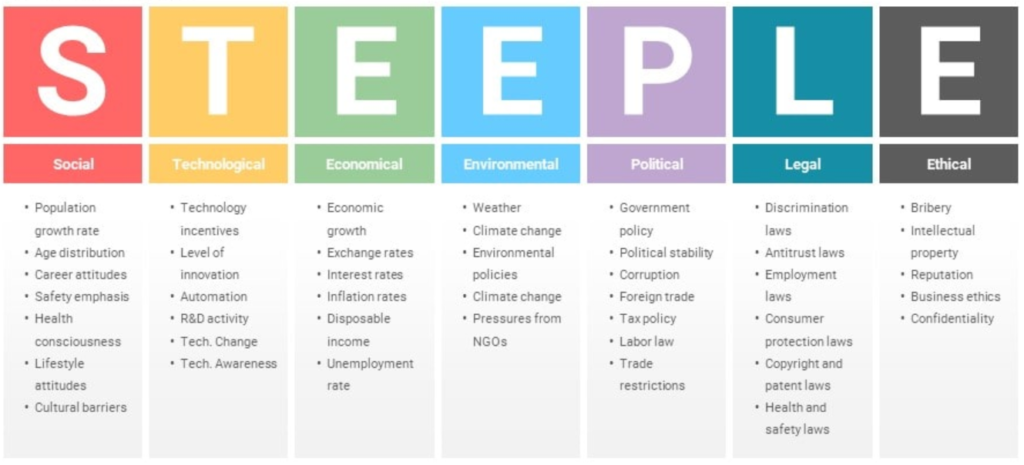Unit Business Management Toolkit (BMT)
BMT (SL) STEEPLE analysis
Reliance-Disney Joint Venture: Transforming India’s Media Landscape

The recent joint venture between Reliance Industries and Disney stands poised to reshape India’s entertainment industry, merging Disney’s vast catalog of global content with a uniquely Indian twist. This collaboration aims to deliver a tailored viewing experience that resonates with India’s diverse cultural landscape, where audiences hold traditional values in high regard. Recognizing the importance of local appeal, both companies plan to adapt Disney’s content, steering clear of themes that may not align with India’s often conservative social norms. This approach not only enhances the accessibility of global media but also seeks to harmonize it with the cultural nuances of Indian society. Socially, Indian government are concerned that (just like Netflix) the popularity of media can be too great! How so? Well, Netflix as a concept was so successful, that the business name has entered everyday useage! Are American’s better off or worse off with Netflix? Socially, they seem happier with endless hours of strong content, but economically and socially, does this endless screen time promote social well being?
From an economic perspective, the venture promises substantial benefits, particularly through the creation of thousands of jobs in digital production and media services in India. However, there are concerns among industry analysts that this large-scale partnership could inadvertently disrupt the job market, especially for smaller local media companies that may struggle to compete against such a powerful alliance! The combined influence of Disney and Reliance hints at an oligopolistic market structure, where high barriers for new entrants could lead to a landscape dominated by a few major players. This trend may not only limit consumer choice but could also drive up prices, reducing diversity in the media and diminishing the range of voices in the Indian entertainment industry. Political concerns are also important as the business oligopoly can turn into a political tool where companies are allowed to become too large!
Technological advancements are a cornerstone of the joint venture’s strategy, as Disney leverages Reliance’s extensive mobile network to reach previously underserved rural areas. This expansion is designed to close the digital divide, offering streaming services to audiences who may have limited access to traditional media. While this increased connectivity offers potential benefits, it also introduces new challenges around data privacy and cybersecurity, especially in rural regions where security measures are often less robust. Privacy advocates warn that without rigorous safeguards, this connectivity push could expose vulnerabilities, potentially affecting millions of users.
Environmentally, the anticipated spike in digital consumption associated with this partnership could strain India’s data infrastructure, escalating both energy consumption and emissions from data centers. As streaming becomes more widespread, the demand for energy-intensive digital services could pose sustainability challenges. Addressing these environmental impacts may require innovative solutions, such as investing in renewable energy sources for data centers or implementing energy-efficient technologies, to mitigate the environmental footprint.
On the political front, the partnership aligns well with India’s goals for digital growth, resonating with government initiatives aimed at fostering connectivity and digital inclusion. Yet, as foreign media permeates the local market, regulatory oversight on content representation may intensify. Indian authorities have shown an increasing willingness to implement content regulations that uphold traditional values, and this trend may continue as foreign media conglomerates expand their reach. The partnership therefore sits at the intersection of promoting digital advancement while navigating the intricate balance of cultural sensitivity, economic inclusivity, and diversity.
In summary, the Reliance-Disney joint venture exemplifies both the opportunities and complexities of foreign collaborations in India’s evolving media sector. While the partnership holds the promise of transforming entertainment accessibility, it must navigate economic, technological, environmental, and political challenges to ensure it contributes positively to India’s digital and cultural landscape. As this joint venture unfolds, it will likely serve as a blueprint for future media partnerships aiming to blend global content with local traditions in one of the world’s most dynamic markets.
Questions
- Using the case study above, create a STEEPLE analysis [8]
- Analyse which seem to be the greatest potential area of concern for the Reliance – Disney merger [5]
- Analyse who is the greater beneficiary (potentially) in this deal [6]


